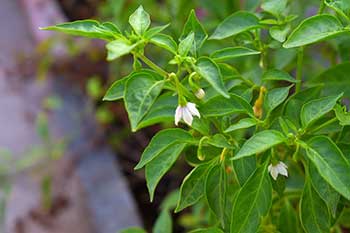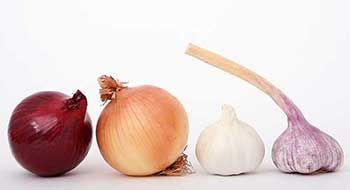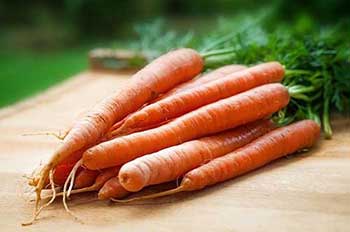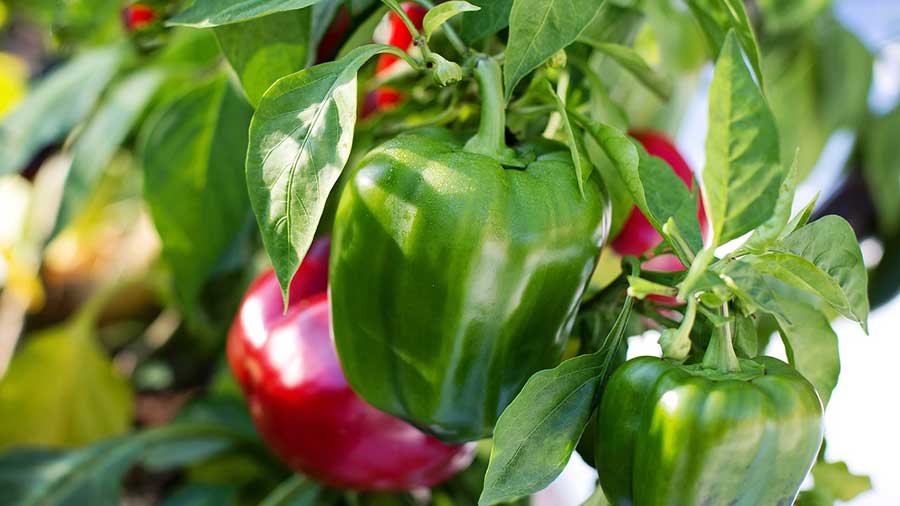I oftentimes hear that if you cut or pinch the first set of flower buds off fruit plants they will grow bigger and produce more fruits later. Should you pick the flowers off pepper plants? I tried picking off the first set of flowers on my pepper plants, and the answer is yes. Doing this procedure made my pepper plants produce more fruits for the next few weeks.
On my bell pepper, I noticed that as soon as I performed this simple procedure, my harvest has increased! I have observed before that in one bell pepper I planted in a pot, there were 1 or 2 fully grown bell peppers but that’s it. They are the only ones that are growing. The succeeding fruits seemed to stop growing. In some plants, the next batch of flowers was falling for no apparent reason at all.
What Happens When you Cut the Flowers Off Bell Pepper Plants
During the fruiting stage, plants tend to concentrate all the nutrients that they have absorbed from the soil to the very first fruit. This makes the first fruit grow big while aborting the fruiting process on the succeeding flowers, creating a fruiting gap. This is the reason why it’s to better stop the first flower from becoming a fruit by cutting or pinching.
In this way, the plant grows more branches or nodes, thereby creating more opportunities to flower later. Most of the time, the plant is really too young to produce fruits. It is best to develop the branches and leaves first so it can produce more flowers later on in its life.
The Right Time for Bell Pepper Plants to Bear Fruits

When my bell pepper plants started to grow their first flowers, I thought that it was too early in its life to bear fruits. Physically, they are not that tall yet. It’s just too small to support all those fruits. By cutting the first flowers, we are buying more time for the plant to develop its root system. We want to have a mature and well-developed root system for the plant to absorb more nutrients and water from the soil to support all its fruits.
We will see that the root system is well-developed when we can see more branches and leaves. When we cut the flowers, side branches will develop in its place. The roots will then spread more underneath the soil to give it more opportunity to absorb nutrients to support the new branches and leaves.
Fruiting requires a lot of nutrients, so we need to prepare the plants by letting their roots grow and mature so that they will be ready to support the fruits. The stage when the plant is developing its branches and leaves is called the vegetative stage.
You may be harvesting earlier but it’s only one or a few good fruits. But if we removed that fruit early on. Then it will continue to produce more branches. Many branches mean more fruits are coming.
Ensuring Complete Bell Pepper Plant Development
While the pepper plants are developing more branches and leaves, they need 2 vital macronutrients. These are nitrogen and phosphorus. Nitrogen gives the leaves their green color. When the leaves start to yellow, it’s because it lacks nitrogen. When the leaves are more developed, photosynthesis becomes more efficient.
Photosynthesis happens when the plant produces its food. When there is more food, naturally, the plants grow healthier. You can use commercial nitrogen fertilizers at this stage, but I prefer to use a more organic approach. For supplying nitrogen to my pepper plants, I like to use grass clipping tea fertilizer.
Nitrogen-rich Grass Clipping Tea Fertilizer
This organic fertilizer has been used by many gardeners and farmers for centuries. Aside from being free, it is a natural way to supply nitrogen. You can use grass, shrubs, or weeds you can find in your home.

Collect the leaves to fill half a bucket. Cut the leaves to extract the juice. Place in a bucket or a deep container. Add water to fill the bucket to the top. Cover with paper or cloth or any porous material. This is to avoid insects laying their eggs in the mixture. Do not use a solid or non-porous material to cover the bucket.
Doing this will rapidly foul your mixture because of lack of air circulation. Let it sit for 3-5 days. Be sure to mix it daily for about 2-3 minutes before covering it again. To use, simply strain out the solid particles. Use it to water your plants about 2-3 times a week.
If you don’t have time to mix up some grass and water, you may use green tea instead. Green tea is rich in nitrogen and has many micronutrients beneficial to plants such as Manganese and Zinc.
Manganese contributes significantly to plants by keeping the leaves greener and preventing diseases in the roots. Zinc also prevents the discoloration of leaves and helps in the development of chlorophyll. To use, remove the used tea from its bag. Mix in 1 liter of water and let it sit for 1 hour. Pour in the sprayer and spray on all parts of the plant.
It can also be placed directly into the soil. It helps protect the roots against bad bacteria. Apply once a week only. Some teas may have caffeine and it can increase the acidity level of the soil.
Organic Root System Fertilizer
For improving the plant’s root system, you need to supply it with phosphorus. When the root system is good, the plant absorbs water and nutrients from the soil more efficiently. For an organic supply of phosphorus, I use garlic and onion peels.

Garlic and onion peels are natural fertilizers and insecticide for plants. It contains potassium, calcium, and phosphorous. It is beneficial to all plants in that it strengthens the stem and its root system. It also prevents discoloration of the leaves. Don’t throw away your onion and garlic peelings. Put them in a container. Add water.
What I do is for every 1 liter of water, I used about 2 bulbs of onion and 2 bulbs of garlic peelings. Mix thoroughly. Let it sit for 24 hours. Store in a cool dry area, away from sunlight.
After 24 hours, the water becomes brownish in color. Some bubbles may appear. This is normal. To use, remove all solid particles by straining. You can use it directly to water the plants. Or you can use it to spray directly to leaves and flowers. This fertilizer can be used during the seedling and vegetative stages of the plant.
Apply once a week.
Potassium Fertilizer for the Fruiting Stage
If you have been cutting the first flowers of your bell pepper plants, then you should have plenty of peppers right now. At this stage, your plants will need potassium. It gives the fruits their distinctive flavor and aroma. To get my supply of potassium, I use carrots.

Carrots and carrot peels contain high levels of potassium giving a wonderful effect to plants. Potassium is what your plants need during their flowering and fruiting stage. It increases the number of flowers the plant can produce. When I want more tomatoes or peppers, I just pour this mixture into my pots.
To make a carrot fertilizer, cut the carrots into tiny pieces, about half an inch thick. You may also include carrot peelings. For a finer texture, you may also process the carrots using a blender. Put the sliced carrots in a plastic or glass container and add 1 liter of water. Mix it thoroughly.
For me, I like to use those 1 –liter water bottles so I could just shake them. Cover this mixture and let it sit for 24 hours in a cool, dry place, away from sunlight.
Use it directly to water the plants. It’s not a complete fertilizer but, hey, it’s better than plain water. This is good for small container plants. You refill the water and use it four more times. After which, you can just pour the carrots into the soil or in compost. Apply once or twice a week.
Final Thoughts
Bell peppers love sunlight. Make sure to place them in areas where they can receive full sun. They also don’t like inconsistent watering. To make them really happy, make sure to water them with the same amount of water at the same time daily. Sometimes we compensate when we forget to water them but they don’t really like it.
They tend to develop blossom end rot due to inconsistent watering which causes fruit deformities or stunted fruit growth. If you’re using water from the tap, it is best to let the water sit overnight to let the chlorine evaporate.
Lastly, if you are planting in containers, use a bigger one. For bell pepper, use at least a 1-gallon container. This will give its roots more area to absorb nutrients from the soil. A container’s nutrient content is limited so from time to time, add organic material or compost to add nutrients to the soil. This process is called topdressing. When you water the plant, the nutrients from the organic materials will leach into the soil.










